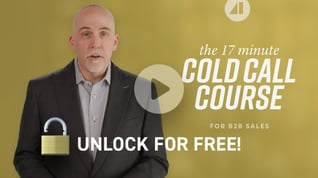Not every salesperson who looks busy is truly effective—understanding the difference can make or break your sales results.
At one time I had a big team of sales reps. It was rather crude, but I decided to look at each person, grading each one on their activities. It was easy to like the highly active sales reps. My CEO suggested that the sales reps should have deals in 30 days, even though we were selling temporary labor, which would only happen when the salesperson was good enough to win a deal.
In enterprise-level sales deals, the kind that took more time, I believed that because there was a lot of activity, the deals would eventually appear. This was disappointing, as it was difficult to reach my sales targets.
When a couple of people joined our team, I expected improvement. They had sold before, so that should have helped us get the revenue we needed. One sales rep was caught swimming at his apartment during the day. He had the wrong kind of activity, the kind that caused me to let him go. Years went by before I started selling again, taking my reps with me to help them see and understand the sales conversation. I was a good salesperson, and a couple of other reps working for me were also effective.
What I noticed was that there were two types of salespeople. We can call the first the “active rep” and the second type the “effective rep.”
Sales Effectiveness in B2B Sales: Key Evidence That Matters
- The first evidence of effectiveness is that the sales rep is good enough to confirm a meeting with a decision-maker. In today’s B2B sales landscape, this is much harder because there are a large number of competitors banging on the phones and filling inboxes with emails.
- The second evidence is that the salesperson does their research and prepares for the meeting with a contact, and in today’s environment, there may be as many as 12 people in the sales conversation.
- The third evidence is handling the sales conversation. Without being able to create value in the sales conversation, you lack sales effectiveness and will have a tough time getting a second meeting.
- The fourth evidence is the use of a non-obvious insight and the ability to share trends or something new with your contacts.
- The fifth evidence is the ability to handle discovery. My discovery process is different from most, unless you have read and studied my book Elite Sales Strategies.
- The sixth evidence is being able to lead your contacts and their stakeholders. Without leadership, the client has to lead you, even though they buy only occasionally while you sell every day.
- The seventh evidence is your ability to help your contacts find the consensus they need to get to “yes.”
- The eighth evidence is winning deals. This is effectiveness in practice.
Why Sales Activity Alone Is Not Enough to Win B2B Deals
One rep looked great on paper, but he didn’t have either the activity or the effectiveness. It is impossible to succeed without both. Another rep was highly effective and able to win large deals. She had a great personality, and people liked her. This was part of how she won deals, by doing half of the ideas herself.
The truth here is that you need both activity and effectiveness to put up great numbers and collect the commissions you can drop into the bank at the end of the month.











